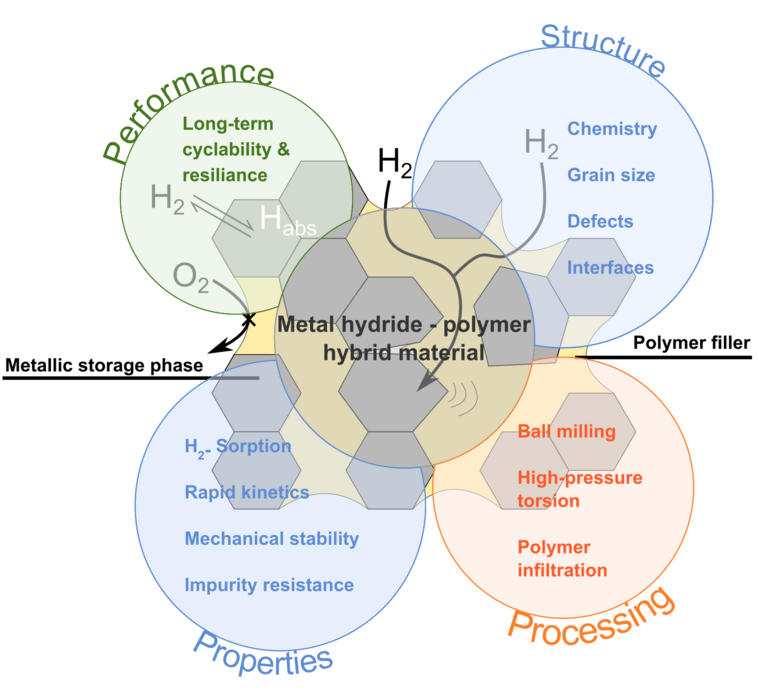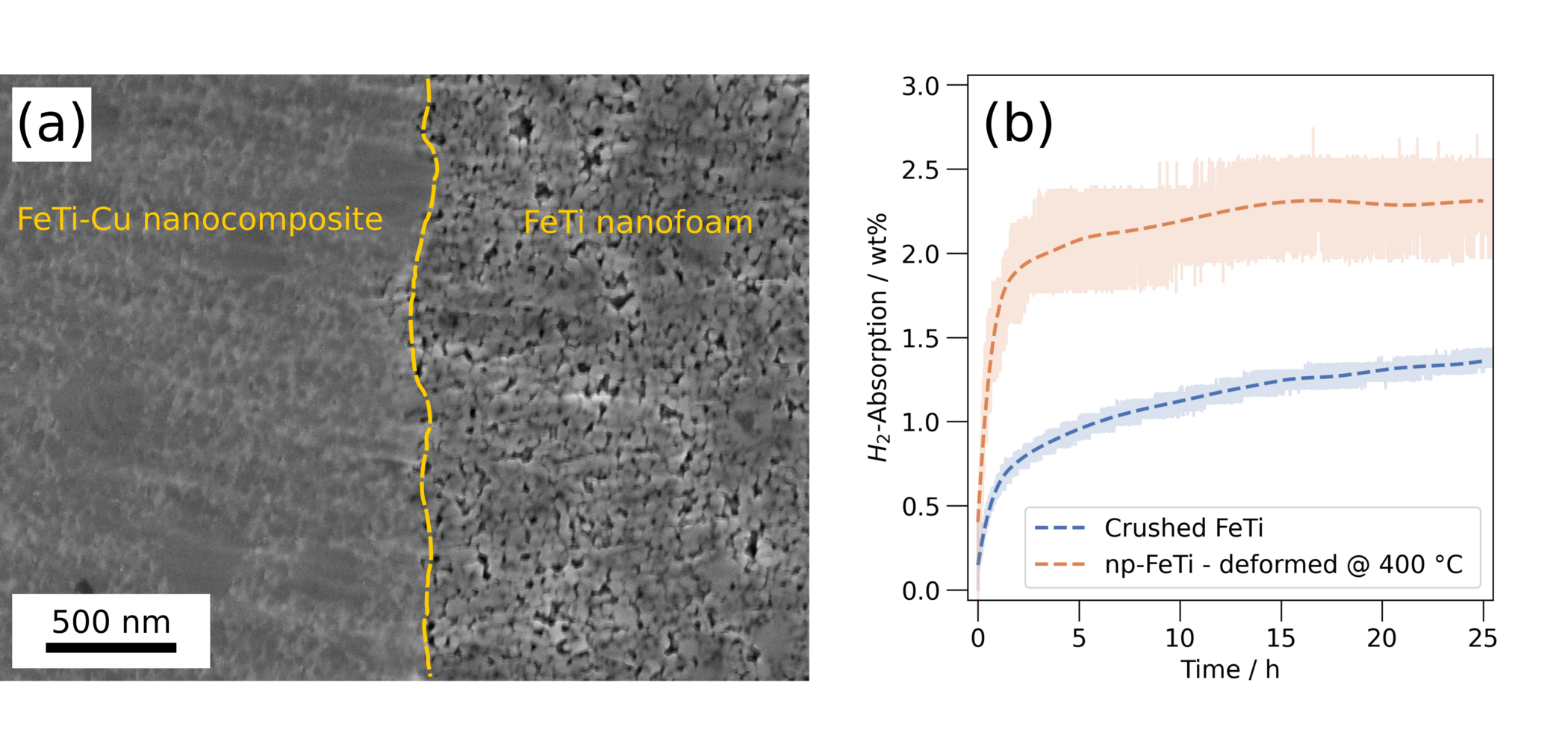Hydrogen storage in porous metal hydride-polymer hybrid materials
Project leader: Jürgen Eckert, Florian Spieckermann
A key enabler for the widespread use of hydrogen is its cheap and easy storage. Promising candidates for solid-state hydrogen storage are metal hydrides; examples of such hydride-forming metals are FeTi, Mg, LaNi5, and high-entropy alloys. Metal hydrides exhibit high volumetric energy densities, safety, and efficiency. Despite these superior properties, many challenges, including complex activation treatments, sluggish kinetics, insufficient (mechanical and chemical) stability, and unfavorable pressure-temperature conditions for loading-unloading operations, need to be surmounted

Figure 1: Illustration of the metal hydride-polymer hybrid material, including all relevant processing steps, structural characteristics, and properties.
This project aims to tackle the mentioned problems by prototyping porous metal hydride-polymer composites (Fig. 1). The project encompasses all required steps for achieving this - from preparation over characterization to functionalization. Nanoporous material can exhibit excellent properties such as high surface-to-volume ratio, high strength-to-weight ratio, and electrical and thermal conductivity. Especially the large surface area is essential for rapid hydrogen absorption. The pores are infiltrated with a polymer that provides mechanical stability and selective hydrogen gas permeability. Additionally, the polymer adds another degree of freedom for engineering a high-performance storage material with minimal detrimental effects on the gravimetric storage density. The investigated material systems include FeTi, as a chemically simple and well-studied model system, and promising high-entropy alloys, e.g., TiZrVNbHf.
As a starting point, composites of immiscible storage and sacrificial phases are synthesized by High-Pressure Torsion (HPT), with the first model system being FeTi-Cu. Then, the sacrificial phase is selectively dissolved by wet-chemical processes, yielding a nanoporous and nanocrystalline metallic foam with high defect densities. Finally, the pores are infiltrated with polymers. The resulting hybrid material, the precursors (nanocomposite, metallic foam), and the involved processes (ball milling, HPT, (electro)chemical etching) are carefully investigated to shed light on the underlying processes and find optimization and tuning possibilities.
The investigations involve detailed structural characterization of the composition, nano- and microstructure, and morphology. In particular, the aim is to understand the impact and interplay of various interfaces (surface, grain boundaries, phase boundaries) on the material's (hydrogen sorption) properties. Primary characterization methods include electron microscopy (SEM, TEM) and (Synchrotron) X-ray diffraction. We complementarily probe the mechanical properties using micro- and nanoindentation. Such experiments performed on pristine and cycled materials can serve as a metric of the potential changes and aging effects due to hydrogen absorption and desorption. The hydrogen sorption performance is investigated using a Sievert's apparatus, enabling the determination of capacity, kinetics, and long-term cyclability.
A first milestone was achieved by preparing a FeTi-Cu nanocomposite with tunable grain size and mechanical alloying. These structural features directly translate into the nanoporous metallic foam, showing excellent initial absorption properties of the metallic foam compared to the as-cast material.

Acknowledgements

SCoRe A+ - Strategic Core Research Area – Hydrogen and Carbon
Project duration:
01.06.2021 – 31.05.2024
Collaborators:
Gregor Mori - Department Chemistry - MUL
Daniel Kiener - Department Materials Science - MUL
Oskar Paris - Department Physics - MUL
Michael Zehetbauer / Erhard Schafler - University of Vienna - Faculty of Physics
Helmholtz-Zentrum Hereon - Institute of Hydrogen Technology
Deutsches Elektronen-Synchrotron DESY
Publications:
L. Schweiger, D. Kiener, M. Burtscher, E. Schafler, G. Mori, F. Spieckermann, J. Eckert, Mater. Today Adv.2023, 20, 100433.